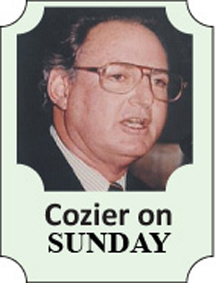The shambolic state of West Indies cricket administration, long established, has been further substantiated by the jostling for the West Indies Cricket Board (WICB) presidency, the vote for which is scheduled for its annual meeting in St. Lucia March 27.
Two contenders, the current vice-president Dave Cameron and former West Indies captain Clive Lloyd, have already stated their intention to seek the post. Additionally, Julian Hunte, after hinting that he would finally step down as president, has been reportedly influenced to seek a fourth successive term.
On the surface, it is democracy at work with the best man chosen, except that the process is hardly democratic in its literal sense.
Each candidate, and his vice-presidential running mate, can be nominated and seconded only by a full-fledged board member; he needs to clear that hurdle before he goes to the ballot of the 14 electors, comprising president, vice-president and two each from the territorial boards, Barbados, Guyana, Jamaica, Leeward Islands, Trinidad and Tobago, Windward Islands. (In Barbados’ case, its votes are cast by its two representatives, Pat Greenidge and Calvin Hope, as distinct from its two directors, BCA president Joel Garner and Conde Riley). The three ex-officio directors do not directly take part. Hunte’s vice-president would either be Garner, the giant fast bowler of the dominant West Indies team of the 1980s, or Gregory Shillingford, the Leewards’ president whose background is instructive. Fired as the WICB’s chief executive 10 years ago, he had his case for wrongful dismissal dismissed in court; at present, he faces a Leewards’ association vote of no confidence
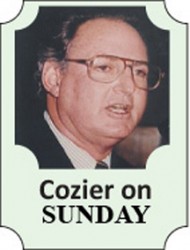 Cameron, who came onto the WICB as Jamaica Cricket Association (JCA) director, appears to have overcome the stigma noted in the Justice Lucky Report of his influence over sponsors Digicel eight years ago in helping fund renovations to his club, Kensington. He has Emmanuel Nanton, the Windward Islands’ director, as his running mate.
Cameron, who came onto the WICB as Jamaica Cricket Association (JCA) director, appears to have overcome the stigma noted in the Justice Lucky Report of his influence over sponsors Digicel eight years ago in helping fund renovations to his club, Kensington. He has Emmanuel Nanton, the Windward Islands’ director, as his running mate.
It would be Hunte’s fourth successive term at the head of an organisation where he has held various positions stretching back more 40 years. Cameron has been his deputy throughout the past six years.
It is the first time anyone even close to the WICB can recall such a three-way contest. The protocol has previously been for the candidate with the majority support to be returned unopposed in a show of unity; if there are three on the ballot paper this time and it comes down to a vote, five, rather than eight, could be decisive.
The wild card is Lloyd.
His previous attempt for a presidential shot was blocked on the grounds that he did not meet the residential requirement; his home was outside the West Indies at the time.
His more recent relationship with the WICB has been such that he can now expect no automatic nomination. Initially installed by Hunte as one of three ex-officio board members, he resigned in 2011 after he was appointed head of Interim Management Committee set up by the Guyana government following its ruling that the Guyana Cricket Board (GCB), the WICB’s affiliate board, was illegally constituted.
While the impasse is still not settled (if anything, it has become more acrimonious), Lloyd has continued to be a strong critic of the WICB’s handling of the situation.
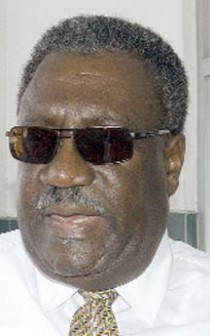
Yet there is no reason to doubt his commitment or his assertion that he has been increasingly pushed to go for the presidency. His reputation alone, as the acclaimed leader of the West Indies team during its golden years of the 1980s, recommends him to those who believe it is time to revert to an able cricketer as the head of a cricketing organization.
Sir Wes Hall was the last Test player in the position 2001-03; Hunte is the latest in the recent sequence of business executives who have overseen mainly chaos and controversy.
Cricketing, even captaincy, skill is obviously no guarantee that Lloyd would make a better fist of the job at a time of rapid changes in the game than anyone else; what makes a disenchanted cricketing public crave for change is the WICB’s continued bungling, its costly arbitration losses to the West Indies Players Association (WIPA) and individual players and its failure to improve the general standard of the game. While Lloyd makes his case by lobbying through the media, governmental involvement is not to be discounted. A scenario, perhaps too far-fetched for serious consideration, has been advanced that the Guyana government recognize the GCB on the guarantee that its directors put forward Lloyd as its candidate and seek support from other boards.
The likeliest outcome is that Hunte would be back in office come March 28 and that nothing will change, as it hasn’t for a decade and more.
++++++++++++++++++++++++++++
EARLY this morning, Caribbean time, a West Indies team set out against Australia in a World Cup final. Not since 1975 has that occurred.
In the previous instance, the West Indies confirmed their status as undoubted favourites with a memorable victory by 17 runs as the late evening sun set on Lord’s Cricket Ground.
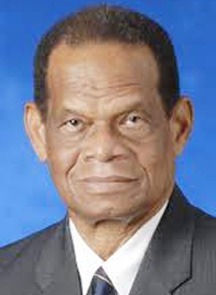
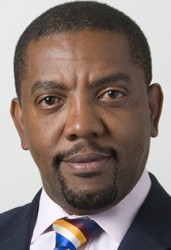
The names then on the scoresheet were universally renowned – Lloyd, Kanhai, Murray, Fredericks, Boyce, Greenidge, Kallicharran, Richards. Those who take the field today at the Brabourne Stadium in Mumbai are anonymous – or, until now, have largely been.
The Jamaican, Stephanie Taylor, rated by the ICC as the top women’s all-rounder and among the top batters (as they are called to avoid any commentator’s embarrassment), and Deandra Dottin, the power-hitting equivalent of Kieron Pollard, might have rung a bell for those who pay more attention to the erratic exploits of the other gender. But not many others.
It is the final of women’s cricket, the poor relation of the game that gains scant attention except at times such as this when television cameras are on hand to showcase their underrated talents to the world.
Until recently, the powerhouses were Australia, England and New Zealand. Now, with increasing attention, the roots have spread. More and more bi-lateral series have been organized so that others (India, Sri Lanka, South Africa and, not least, the West Indies) have got stronger with the experience. The tournament that ends today has been the most competitive of all those initiated as far back as 1973.
As the men were simultaneously crashing from one defeat after another in Australia, the women were demonstrating the resilience absent in their counterparts to the south. There was clearly an absence of inflated egos. It was obvious that they were all playing for each other. A thrashing by 105 runs by India in the opening match suggested an early and ignominious exit for the girls in the maroon. Victory by 209 runs over Sri Lanka three days later revealed their true grit.
Successive Super Six victories over South Africa, New Zealand and the previously unbeaten and seemingly invincible Australia carried them through to today’s rematch with the Aussies.
It would be fitting deja vu should captain Merisa Aguilleira lift the trophy at the end, as Clive Lloyd did all those years ago. The West Indies are underdogs – but they did upset the same opponents in their previous match. They can again if they believe they can.
